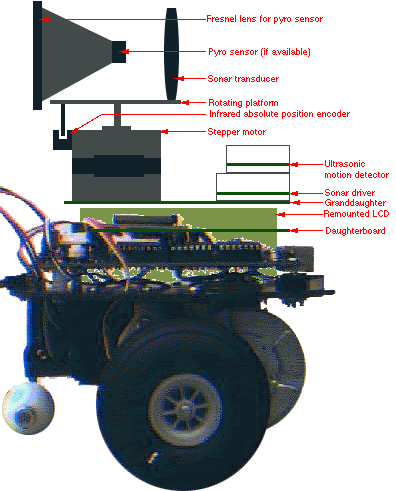
In order to be able to perform our task, we're adding the following equipment to our robot:

We need to be able to detect whether humans are in a conference room. The only stock equipment that would help are the microphone and perhaps the photocells (a dark room is unoccupied). Thus we're adding a pyro (body heat) sensor, subject to availability, and an ultrasonic motion detector with a range of 4-7 meters.
Our robot's built-in odometry, used for navigation, is very course and prone to error. Thus to keep his bearings, Killer needs to examine features of his environment (in particular, walls). Points are subtracted for bumping into things, so the bump sensors are out. The infrared is forward-looking, short range (6") and somewhat flaky, so it won't help with navigation. (It can save us from an unexpected bump, though.)
So, we're adding a pointable sonar transducer and a set of whiskers (not pictured). The sonar will help us follow walls, which will keep us moving in a straight line. Each whisker is a mechanical switch with wire sticking out to the side of the robot. It's coarser than sonar, but likely to be more reliable.
Finally, we're replacing one of the 4-AA battery packs with a lead-acid battery, to provide longer running time and greater current for the motors. We're also adding a 9V battery to power the ultrasonic motion detector. The batteries will be placed below the chassis to the rear, to help balance the robot. As you can see, he's going to get pretty tall, and therefore possibly unstable.